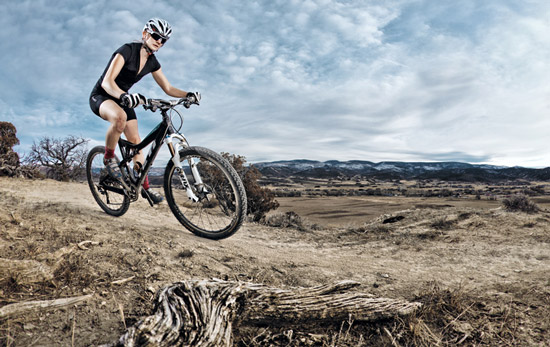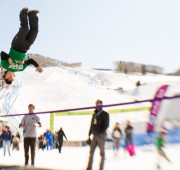RadioPopper – First Look
Action sports photographers are the kind of photographers who require the most out of their remote flash triggers. There are a few things that every action photographer looks for when choosing a system.
Unlike shooting in studio, where everything just works fine, we get to shoot at some rad locations. Whether at a crazy canyon in Moab, the half-pipe at winter X Games, or the big booter at Crankworx, we always need reliable equipment that not only works…. but can handle extreme conditions and locations, and often over the limit of it's recommended use(and all this for a gloss photo page in a magazine).
Radio triggers are one of the many ingredients in the recipe for a successful photo shoot. Sometimes they just work, and sometimes they can simply ruin your day. I have had a chance to shoot with the most popular systems and use them in the field to get a good idea of what they can actually do.
Last week I got to play with Radiopopper for the first time, and it was quite an amazing experience. In my opinion, radiopoppers perform really well in all the key features/parameters that are really important for every sports shooter.
The first one is reliability, although I haven’t had a chance to use them for a long time, they haven’t failed a single time yet and I know they are equipped with an error check after every frame to avoid misfires and miscommunications. This is just one thing that gave me confidence and already makes them more reliable than a lot of the other triggers on the market.
Another great thing to look for is range, which they have plenty of. Imagine the following situation: You are at a big action sports event, and you want to get the shot where the mountains behind the jump are all compressed with the crowd in the foreground and your athlete is nicely lit, all this happens at sunset…you know…one of those epic shots. You put your 70-200mm and take a 5-10min hike so you can step back and get everything in the frame at 200mm. You have everything perfectly lined up and your flash doesn’t go off, now your athlete blends with the busy background and you are pissed at your triggers. That’s what happens with most of the other triggers in the $100 range, including some of the more expensive brands. Both radiopopper systems have a reliable 1500+ range, which is just great…freedom baby!
Flexibility is something else we could definitely use, and to have flexibility you need a ton of different features packed in your triggers. One thing I already love about the radiopopper systems is that I can control the power output of the flashes from my transmitter, not only that but I can easily have three different groups. Another good one, which is much appreciated in our circles, is HSS(High Speed Sync – The ability to sync your flash and camera at any given shutter speed).
They have two different systems, the PX system that works with TTL flashes and supports all the features that the flash has as if it is sitting on top of your camera. And the JrX system, which is the “basic” flash trigger system that is compatible with any flash that has a sync port. I put basic in quotations because they still allow you to have three different groups and control the power output of any Paul C. Buff flash as well.
The cool thing is that both systems are fully cross-compatible and you can use them in any way you want without even thinking about it. So you can control the power output of your studio flashes from the PX system, or control your TTL flashes from the “basic” JrX system. And of course you can put all your different flashes in a bowl and mix them all together.
For me it was great using the system for a first time, I basically set all the flashes to the same channel and started shooting. Getting great light was a no-brainier since I had TTL on my side. With just a few clicks right from the camera I was able to underexpose the ambient and bump flash exposure just a little bit to get nice edgy look for my images.
Check out the samples in this article, and please share your experience with the radiopopper systems.
Once I get to use them a lot, we are going to do a detailed review, that covers all there is about radiopopper!













on
—So you can control the power output of your studio flashes from the PX system, or control your TTL flashes from the “basic” JrX system. —
Isn’t this backward..or is it me…Love my RadioPoppers!
JQ
on
Hey Joel,
You can do either, as I mentioned in the review they are fully cross-compatible. When you are firing TTL flashes with JrX transmitter, they automatically go in to manual mode, and you get to control them just as you control your studio flashes. Then you can also control studio flashes form the PX transmitter…pretty cool!